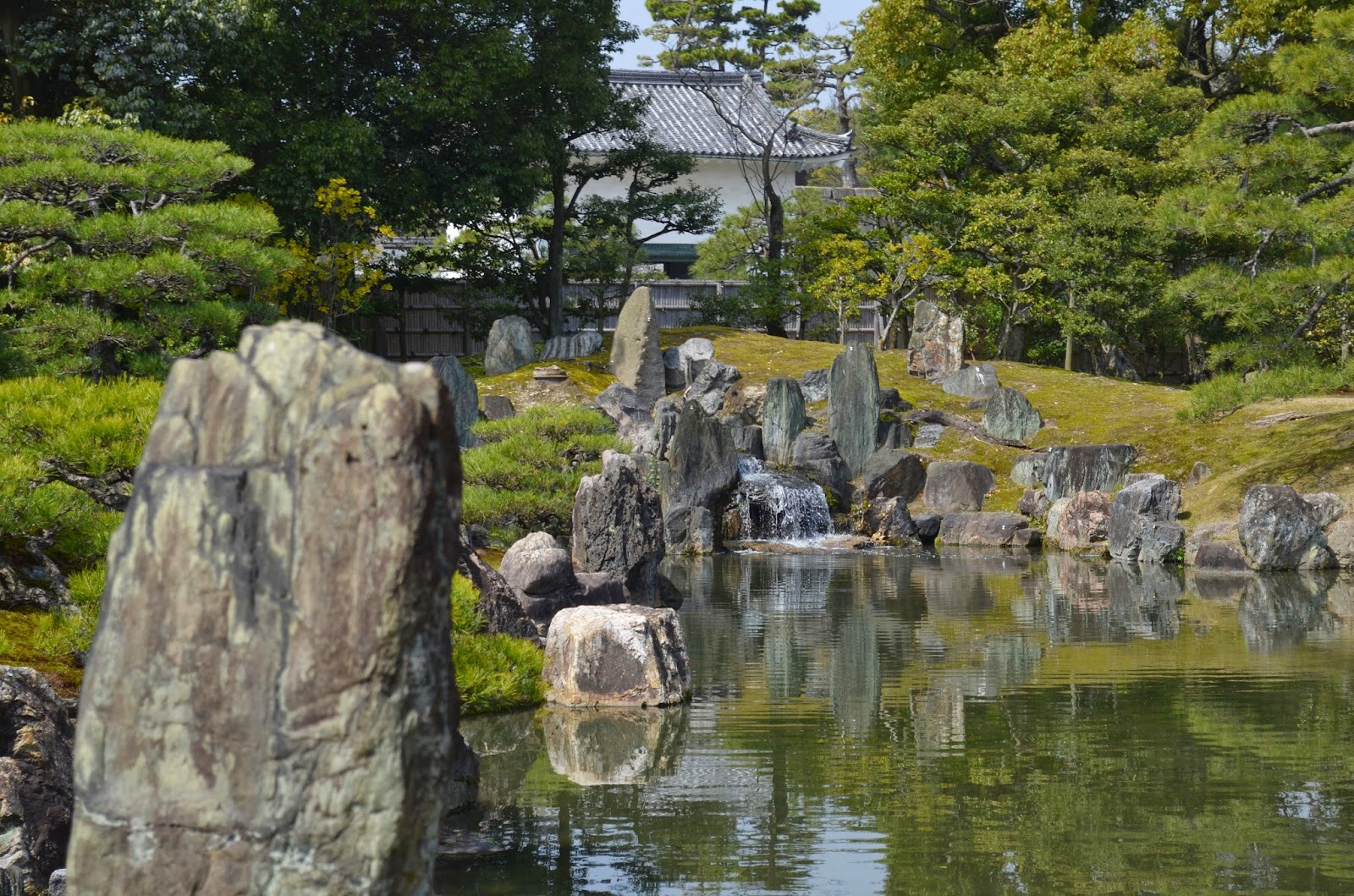Something a bit more educational today. I got up pretty early and rode my bike about 4 blocks to Nijo-Jo. Beyond looking awesome, it's got loads of historical significance. It was commissioned by Tokugawa Ieyasu in 1601, and was completed about twenty years later. The castle has two rings of walls (both with moats), Ninomaru Palace, Honmaru Palace, several gardens, and a few other support structures. Ninomaru Palace served as home of the Imperial Court through the Edo period (1603-1867). With the Meiji Restoration (1868), the court moved to Tokyo but the Imperial Cabinet was housed in Honmaru Palace. Ninomaru Palace has probably the world's most prominent and famous example of nightingale floors. I wasn't able to take pictures inside the palace, but that wouldn't have conveyed the sound anyway. If you clod along carelessly it sounds more like you're stepping on nightingales, but if you tread smoothly it does sound rather like a bird chirping. However, there was a practical application beyond the ambience: security. The sound would warn of nighttime intruders.

The gate leading to Ninomaru Palace
Standing in the gate, looking at the palace
Ninomaru Palace
The backside of the gate
Detail of the woodwork over the entrance to Ninomaru Palace. The inside had loads of beautiful woodwork like this, along with every surface covered in murals. Many of the murals were reproductions with the originals being stored somewhere better preserved.
This picture doesn't do much justice to what I was looking at here. I was actually pretty far up on the castle wall, and those buildings are all pretty huge.
Honmaru Palace. There used to be a five story pagoda but it was struck by lightning in the late 1700s.
The inner wall
Here's a couple PDFs direct from their website if you want to check it out:











No comments:
Post a Comment